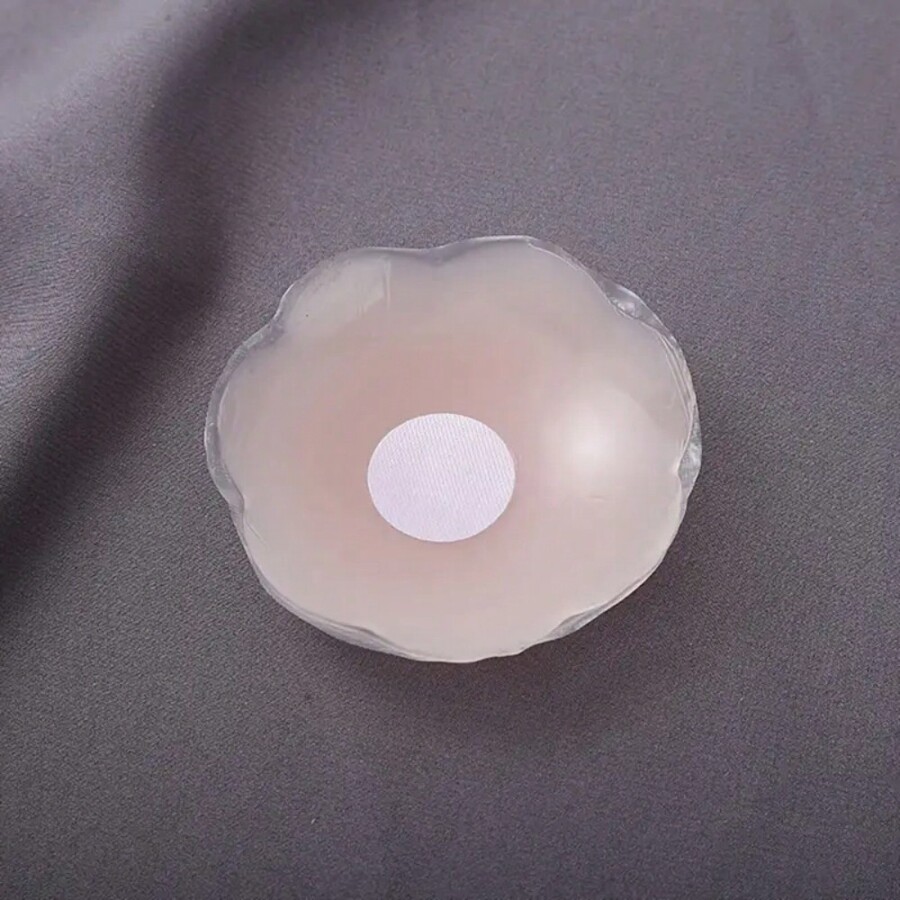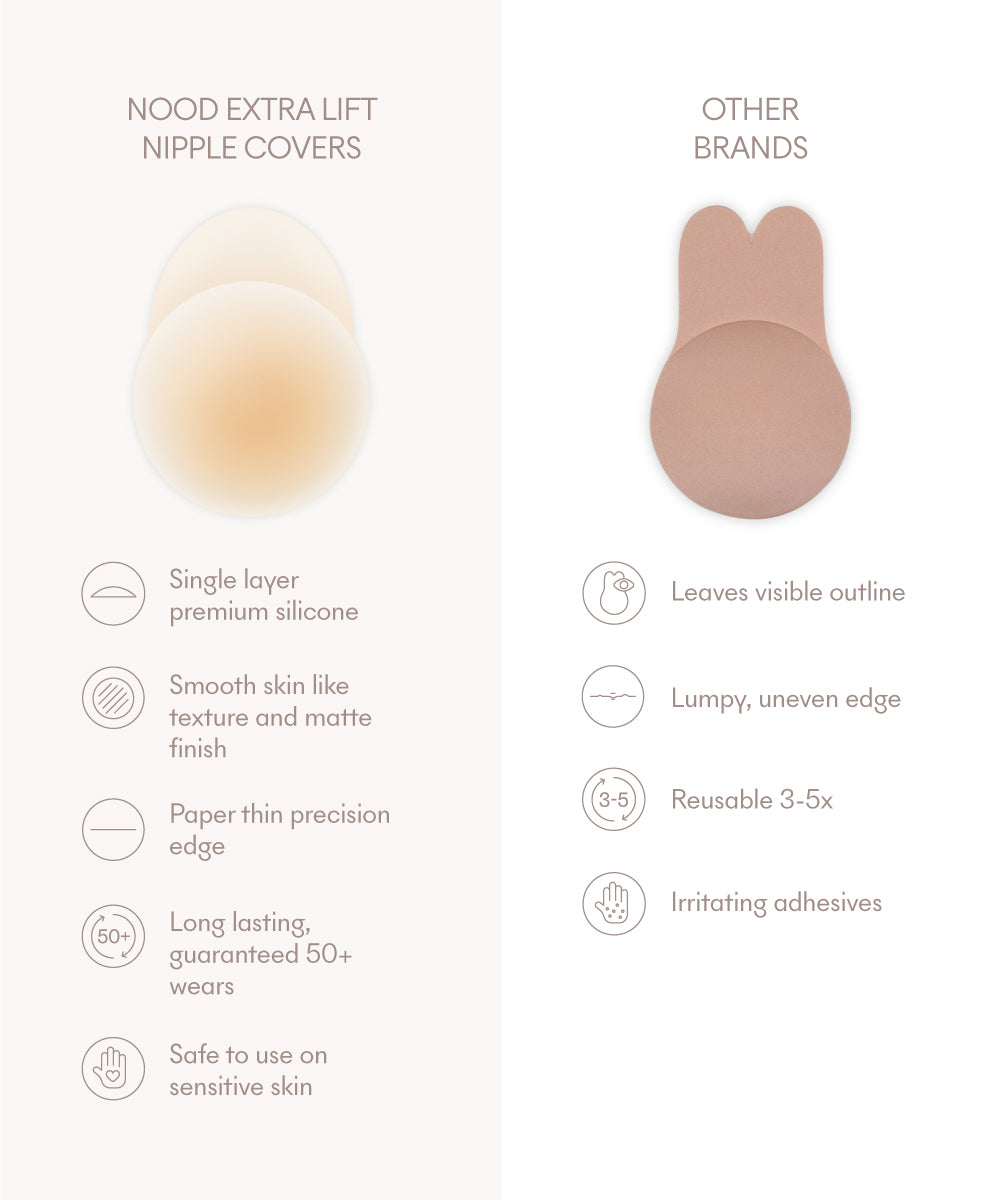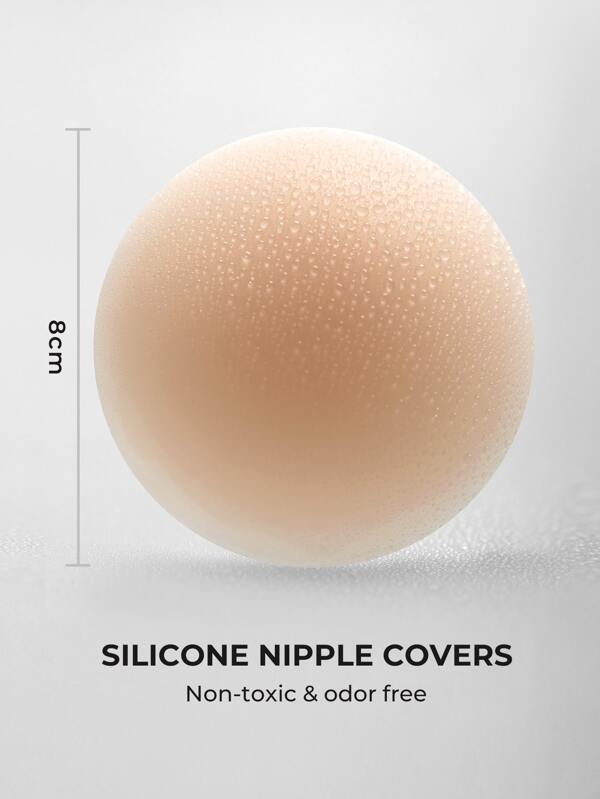Content Menu
● Introduction: Are Silicone Nipple Covers Safe?
● Understanding Silicone Nipple Covers
>> What Are Silicone Nipple Covers?
>> Why Is Silicone Used?
● Benefits of Using Silicone Nipple Covers
>> 1. Comfort
>> 2. Hypoallergenic Properties
>> 3. Invisibility
>> 4. Reusable Options
● The Science of Silicone: What Makes It Safe?
>> Medical-Grade Silicone
>> Dermatological Testing
>> Adhesive Safety
● Real-World Safety: User Experiences and Health Effects
>> Low Risk of Skin Issues
>> Myths and Facts
● Best Practices for Safe Use
>> Wear Time
>> Hygiene Guidelines
>> Who Should Avoid Silicone Nipple Covers?
● Product Features to Look For
● Frequently Asked Questions (FAQ)
>> 1. How long can you safely wear silicone nipple covers?
>> 2. Are there any risks of irritation or allergic reactions?
>> 3. Do silicone nipple covers cause cancer?
>> 4. Can reusable silicone nipple covers be cleaned and reused?
>> 5. What should users do if they experience skin reactions?
● Conclusion
● References
Yes, silicone nipple covers are generally considered safe when made from high-quality, medical-grade silicone and used according to guidelines. This comprehensive article examines safety considerations, health effects, best practices for use, risks, recommendations from dermatologists and real users, and includes visual content plus an FAQ section.[1][2][3][4]
Introduction: Are Silicone Nipple Covers Safe?
Silicone nipple covers have grown in popularity as a discreet, comfortable option for concealing nipples under form-fitting outfits. The main question for users and industry professionals remains: are silicone nipple covers safe? To answer this, it's important to explore product construction, medical perspectives, material quality, typical side effects, hygiene, and expert advice.[5][6][3][4][1]

Understanding Silicone Nipple Covers
What Are Silicone Nipple Covers?
Silicone nipple covers are thin, flexible discs designed to adhere to the skin over the nipples, creating a smooth silhouette and preventing nipple show-through under clothing. They're popular as a replacement for bras, especially with outfits that are backless, strapless, or sheer.[7][8]
Why Is Silicone Used?
Silicone is favored for nipple covers because medical-grade variants are non-toxic, hypoallergenic, flexible, and comfortable. The top products use medical-grade silicone—a material also found in wound dressings, infant care products, and breast implants—because it's proven for biocompatibility and minimal skin reactions.[9][2][3][1]
Benefits of Using Silicone Nipple Covers
1. Comfort
Silicone nipple covers are made from soft, breathable materials that are comfortable to wear for extended periods. Unlike traditional bras, which can pinch or dig into the skin, silicone covers provide a gentle touch, making them suitable for all-day wear.
2. Hypoallergenic Properties
Many silicone nipple covers are made from medical-grade silicone, which is known for its hypoallergenic qualities. This means they are less likely to cause allergic reactions or skin irritations, making them safe for prolonged contact with the skin [1](https://www.jolenebody.com/blogs/news/adhesive-nipple-covers-101-everything-you-need-to-know?srsltid=AfmBOorD54enIxE1zyq9aAoQRGEzoj78sdzkyo7Jgb5irdkLp4wzKUHi).
3. Invisibility
Silicone nipple covers are designed to be discreet, providing a seamless look under clothing. They are ideal for women who want to avoid awkward moments with visible nipples.
4. Reusable Options
Many silicone nipple covers are reusable, making them a cost-effective choice in the long run. They can be washed and used multiple times, reducing waste compared to disposable options [2].

The Science of Silicone: What Makes It Safe?
Medical-Grade Silicone
- Biocompatibility: Medical-grade silicone is engineered to be safe for prolonged skin contact. It's stable, doesn't release chemicals, and blocks bacteria without suffocating the skin.[2][3][1]
- Non-Toxic: Chemically inert, silicone is certified non-carcinogenic and doesn't leach toxins. FDA and ISO standards are applied for the best products.[1][9]
Dermatological Testing
- Silicone nipple covers from leading brands undergo dermatologist approval to ensure safety for sensitive skin.[6][10]
- Hypoallergenic adhesives minimize skin reactions, but users with very sensitive skin should still test before prolonged wear.[6][2]
Adhesive Safety
- Premium silicone nipple covers use medical-grade, silicone-based adhesives, gentle for skin and suitable for repeated application.[11][1][6]
- Medical-grade adhesives balance adhesion and gentle removal, reducing discomfort or trauma to delicate areas.

Real-World Safety: User Experiences and Health Effects
Low Risk of Skin Issues
Most users experience little to no irritation when using medical-grade silicone nipple covers as directed; however, some may notice mild redness or itching if skin is sensitive or if the covers are worn for extended periods.[12][13][14]
- Adhesive allergies are uncommon but possible; removing covers at the sign of irritation is recommended.[14][12]
- Quality matters: Lower-cost covers may use inferior adhesives, increasing the risk of skin reactions.[1]
Myths and Facts
- Cancer Risk: There is no scientific evidence linking nipple cover use to cancer.[12][1]
- Breathability: True medical-grade silicone is semi-permeable, allowing some moisture and airflow; most users report comfort for several hours but not for overnight use.[15][16]
- Reusable vs. Disposable: Reusable products are durable, cost-effective, and safe for up to 50–100 uses with care.[8][4][2]
Best Practices for Safe Use
Wear Time
Experts and manufacturers usually recommend wearing silicone nipple covers for up to 6–8 hours per session and removing them overnight to let the skin breathe.[16][15][11]
Hygiene Guidelines
- Wash covers with mild soap and water after each use; air dry completely before reapplying.[17][16]
- Avoid sharing covers between people to prevent bacterial transfer.
- Store in a clean, dry case when not in use.[16]
Who Should Avoid Silicone Nipple Covers?
- Those with known silicone or adhesive allergies.[14][12]
- Individuals with broken, irritated, or infected skin around the nipples.
- Users experiencing rash, persistent redness, or irritation should discontinue use and consult a dermatologist.

Product Features to Look For
| Feature | Importance & Notes | Citation |
| Medical-grade silicone | Essential for safety and skin protection | gzxksilicone |
| Hypoallergenic adhesive | Lowers risk for irritation and allergies | cakesbody |
| Dermatologist approved | Extra assurance for sensitive skin | cakesbody |
| Seamless edges and finish | Prevents seams and improves invisibility | lovenood |
| Reusable and washable | Economic, eco-friendly, convenient | lovenood |
Frequently Asked Questions (FAQ)
1. How long can you safely wear silicone nipple covers?
You can safely wear medical-grade silicone nipple covers for up to 6–8 hours at a time. Avoid overnight use to prevent moisture build-up and allow skin to breathe.[15][16]
2. Are there any risks of irritation or allergic reactions?
Silicone nipple covers are generally hypoallergenic, but mild irritation is possible if you have sensitive skin or use covers with low-quality adhesives. Remove at the first sign of redness or discomfort.[12][14]
3. Do silicone nipple covers cause cancer?
No, there is no evidence linking silicone nipple covers to cancer. This is a myth not supported by clinical studies or regulatory bodies.[1][12]
4. Can reusable silicone nipple covers be cleaned and reused?
Yes, reusable silicone nipple covers are designed for multiple uses and can be cleaned with mild soap and water. Proper care extends their lifespan up to 50–100 times.[4][8][2]
5. What should users do if they experience skin reactions?
Remove the covers immediately, cleanse the area gently, avoid further use, and consult a dermatologist for persistent symptoms. Always patch-test new products if you have a history of skin sensitivities.[14][12]
Conclusion
Silicone nipple covers are safe for most users when medical-grade materials and adhesives are used, and when recommended hygiene and wear protocols are followed. For sensitive skin or those prone to allergies, patch testing and product selection are vital. Proper usage, cleaning, and limiting wear time help minimize risks and maximize comfort and safety.[3][2][6][1]
References
[1](https://gzxksilicone.com/nipple-covers-safety-uncovered/)
[2](https://www.etsy.com/listing/844486202/reusable-nipple-cover-pasties-honey)
[3](https://neats.me/blogs/news/are-nipple-covers-safe-to-wear)
[4](https://www.glamour.com/gallery/best-nipple-covers)
[5](https://www.nytimes.com/wirecutter/reviews/cakes-nipple-covers-review/)
[6](https://cakesbody.com/products/sticky-cakes-circles)
[7](https://www.getboomba.com/blogs/boomba-blog/disposable-vs-reusable-nipple-covers-pros-and-cons)
[8](https://lovenood.com/collections/nipple-covers-1)
[9](https://www.healthline.com/health/body-modification/is-silicone-toxic)
[10](https://lovenood.com/products/no-show-round-nipple-covers)
[11](https://cakesbody.com/pages/faq)
[12](https://bare-babe.com/blogs/blog/do-nipple-covers-cause-cancer-debunking-breast-cancer-myths)
[13](https://bare-babe.com/blogs/blog/are-nipple-covers-safe-to-use-your-comprehensive-guide-to-nipple-covers)
[14](https://nuebootape.com/blogs/nueboo-blog/are-nipple-covers-bad-for-you)
[15](https://www.newtopsilicone.com/can-silicone-nipple-covers-be-reused-how-to-extend-their-life-and-protect-your-skin/)
[16](https://www.tannanplasticsurgery.com/silicone-nipple-covers/)
[17](https://www.reddit.com/r/ABraThatFits/comments/131rm5r/silicone_nipple_covers_or_pasties_which_ones_are/)
[18](https://pmc.ncbi.nlm.nih.gov/articles/PMC3014757/)
[19](https://pmc.ncbi.nlm.nih.gov/articles/PMC4607874/)
[20](https://www.reddit.com/r/ABraThatFits/comments/dmbz95/nipple_covers_instead_of_bras_discussion/)
[21](https://www.etsy.com/listing/1257348948/small-nipple-covers-silicone-prosthetics)
[22](https://www.youtube.com/watch?v=g9E6zSdncmw)
[23](https://www.reddit.com/r/NewParents/comments/10uc4c5/nipple_shields_are_okay/)
[24](https://www.instagram.com/reel/DM-bo8QRXeC/?hl=en)
[25](https://app.mahmee.com/articles/pros-and-cons-of-nipple-shields)
[26](https://www.shutterstock.com/search/nipple-covers)
[27](https://www.youtube.com/watch?v=O_e0kKxHlnc)
[28](https://breastfeeding.support/nipple-shields-good-or-bad/)
[29](https://www.ebay.com/itm/176634585028)
[30](https://www.walmart.com/ip/Medical-Grade-Nipple-Covers-for-Women-Reusable-Silicone-Adhesive-Pasties-Invisible-Sticky-Covers-Travel-Case/17317455870)
[31](https://www.reddit.com/r/ABraThatFits/comments/1fiiwex/cakes_body_silicone_nipple_covers_they_dont/)
[32](https://www.facebook.com/groups/814933023170476/posts/1612487306748373/)
[33](https://my.clevelandclinic.org/health/treatments/22130-nipple-shield)
[34](https://www.realself.com/question/usadel-de-scar-sheets-gel-worn-nipple-covers)
































































